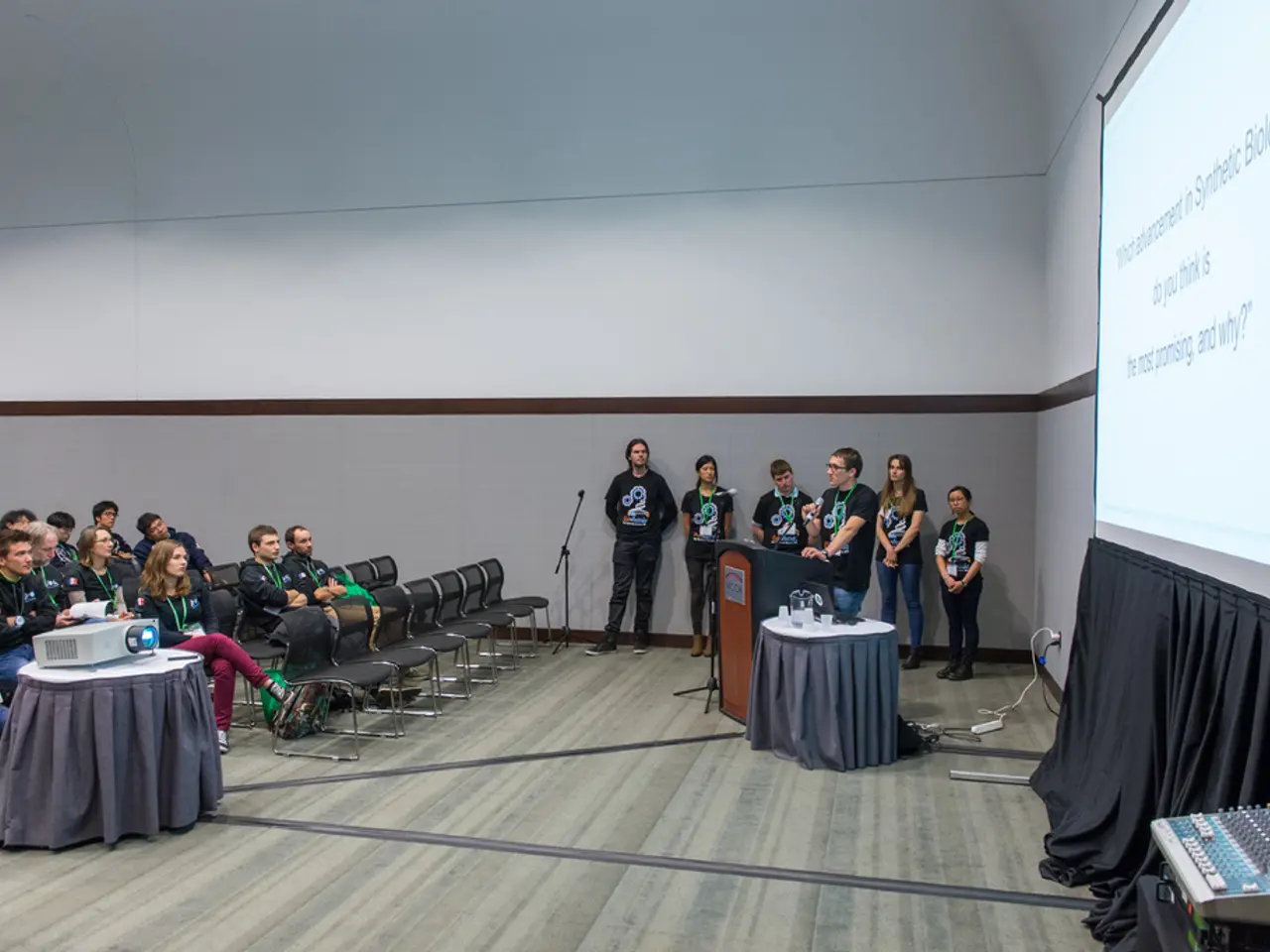Michigan establishes an airway route for exploring electric vertical takeoff and landing vehicles (eVTOLs) in its territory
**University of Michigan Launches M-Air Partnership to Pioneer Advanced Air Mobility**
The University of Michigan (U-M) has announced the launch of M-Air, a new public-private partnership aimed at driving research and testing in advanced air mobility (AAM). This initiative focuses on electric vertical takeoff and landing aircraft (eVTOLs) and beyond-line-of-sight autonomous drones, providing a realistic and regulatory-compliant environment for testing innovative aerial technologies[1][2][3].
At the heart of M-Air is a roughly 40-mile flight corridor connecting U-M's autonomy research and proving ground in Ann Arbor with Detroit's Michigan Central innovation district. This corridor enables comprehensive urban-to-suburban testing of unmanned and electric aircraft[1][2][3].
M-Air builds upon the existing public-private partnership Mcity, expanding its scope to aerial mobility under the U-M Transportation Research Institute[1][2][3]. The partnership will also integrate a drone traffic management system that meets national safety standards, allowing for safe sharing of low-altitude airspace by drones, helicopters, and eVTOLs, even beyond the operator’s visual line of sight[1].
Venkat Viswanathan, a battery expert and associate professor at U-M, serves as the Director of M-Air. He emphasized the partnership’s focus on electric aviation technologies and highlighted the enormous crossover of talent and technology between electric and automated vehicles and electric aircraft and drones[4].
M-Air's new Iron Bird testbed facilities allow users to ground-test batteries and motor flight performance before actual flight trials, supporting electric aviation advancement[1]. The state of Michigan is providing $1 million in anchor funding for M-Air as part of a broader advanced air mobility initiative[1][2][3].
Karen Thole, a Professor of Mechanical and Aerospace Engineering, stated that the next frontier of mobility is moving to the sky with drones and electric aerial vehicles. She noted the confluence of electric powertrains, distributed-propulsion-enabled new aircraft designs, and autonomous operation in the aerospace industry[4].
Michigan Engineering's M-Air partnership aims to foster the development of the workforce needed to sustain advanced aviation technology. The flight corridor, equipped with a drone traffic management system, is expected to play a significant role in advancing the state's leadership in advanced aviation technology[2][3].
Venkat Viswanathan expressed excitement about the current time in aerospace, emphasizing the potential for electric powertrains, distributed-propulsion, and autonomous operation. He believes that M-Air will propel Michigan and the U.S. to national leadership in advanced aviation technology, promote safer and smarter airspace integration for new aerial vehicles, and foster workforce development in this emerging mobility sector[2][3].
[1] University of Michigan. (2021). M-Air: A new public-private partnership to support research into advanced air mobility. Retrieved from https://mcity.umich.edu/news/m-air-new-public-private-partnership-support-research-into-advanced-air-mobility
[2] University of Michigan. (2021). M-Air: University of Michigan's new aerial mobility research initiative. Retrieved from https://news.umich.edu/m-air-university-of-michigans-new-aerial-mobility-research-initiative/
[3] University of Michigan. (2021). M-Air: A new partnership to advance research and testing in electric vertical takeoff and landing aircraft and beyond-line-of-sight autonomous drones. Retrieved from https://michiganengineering.umich.edu/news/m-air-new-partnership-advance-research-and-testing-electric-vertical-takeoff-and-landing-aircraft-and-beyond-line-of-sight-autonomous-drones
[4] University of Michigan. (2021). M-Air: A new partnership to advance research and testing in electric vertical takeoff and landing aircraft and beyond-line-of-sight autonomous drones. Retrieved from https://michiganengineering.umich.edu/news/m-air-new-partnership-advance-research-and-testing-electric-vertical-takeoff-and-landing-aircraft-and-beyond-line-of-sight-autonomous-drones
- The M-Air partnership, focusing on electric vertical takeoff and landing aircraft and beyond-line-of-sight autonomous drones, is also planning to integrate a drone traffic management system that meets national safety standards, showcasing the crossover of technology between sports (aerospace) and technology (electric aviation).
- The confluence of electric powertrains, distributed-propulsion-enabled new aircraft designs, and autonomous operation in the aerospace industry, as highlighted by Karen Thole, is making sports (aerial mobility) a burgeoning field for technological advancements.




